Navigating the myriad of series in the realm of science fiction can often be a daunting task, and Martha Wells’ “Murderbot Diaries” is no exception. At its core, the series delves into the psyche of a self-aware security android who dubs itself “Murderbot.”
Infused with humor, action, and an introspective look into what it means to be sentient, this series has garnered a substantial following. If you’re keen to venture into Murderbot’s world, knowing the right reading order is crucial. Thankfully, you’re in the right place. Let’s dive into the sequence that will give you the best reading experience.
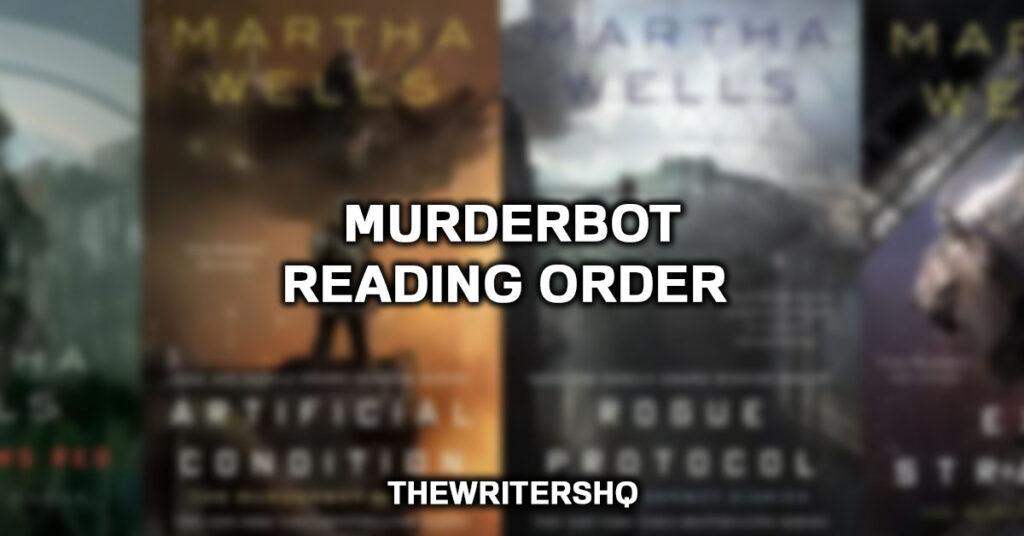
Murderbot Diaries Order
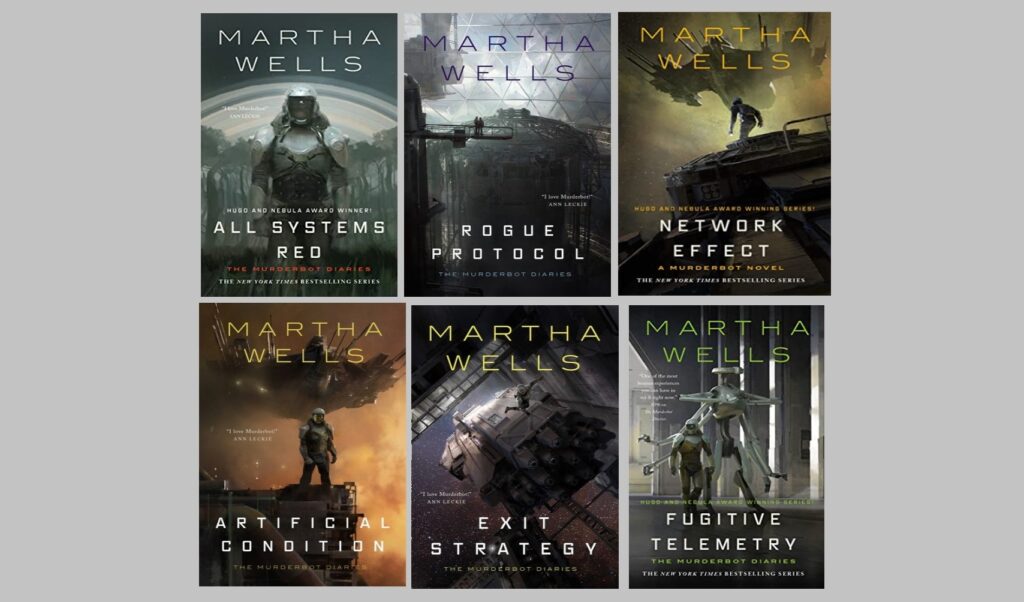
- All Systems Red (2017) – Novella
- Artificial Condition (2018) – Novella
- Rogue Protocol (2018) – Novella
- Exit Strategy (2018) – Novella
- Network Effect (2020) – Full-Length Novel
- Fugitive Telemetry (2021) – Novella
Expert Tip: Remember, the beauty of this series lies not just in its exhilarating adventures but also in its unique approach to understanding identity, autonomy, and the essence of humanity. So, grab a book and embark on this journey with Murderbot as your guide!
The Murderbot Diaries Reading Order
To get the most out of “The Murderbot Diaries” by Martha Wells, you should read the series in the following order:
- All Systems Red (2017) – Novella
- Artificial Condition (2018) – Novella
- Rogue Protocol (2018) – Novella
- Exit Strategy (2018) – Novella
- Network Effect (2020) – Full-Length Novel
- Fugitive Telemetry (2021) – Novella
Is the Murderbot Series Complete?
The “Murderbot Diaries” series hasn’t been declared complete by Martha Wells. Authors sometimes return to beloved series, so it’s possible that there could be more entries in the future. Always a good idea to check the author’s official website or publisher’s announcements for the most recent information.
Will Murderbot be a movie?
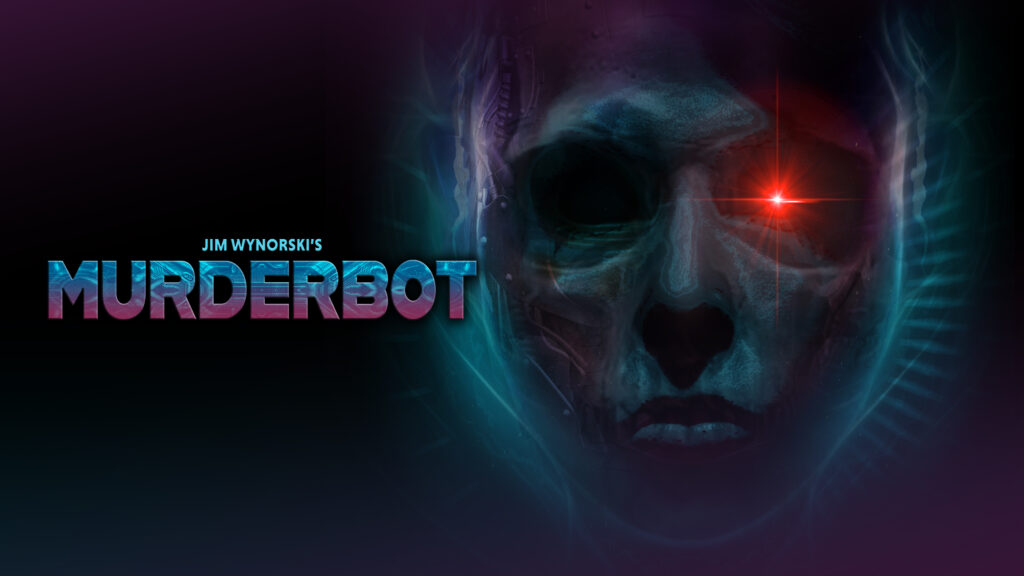
There have been no official announcements regarding a movie adaptation of “The Murderbot Diaries.” That said, the series’ popularity certainly makes it a candidate for potential adaptations. If this is something of interest, keep an eye on entertainment news and Martha Wells’ announcements for any updates.
The Murderbot Diaries: Summary of the Books
1. All Systems Red (2017)
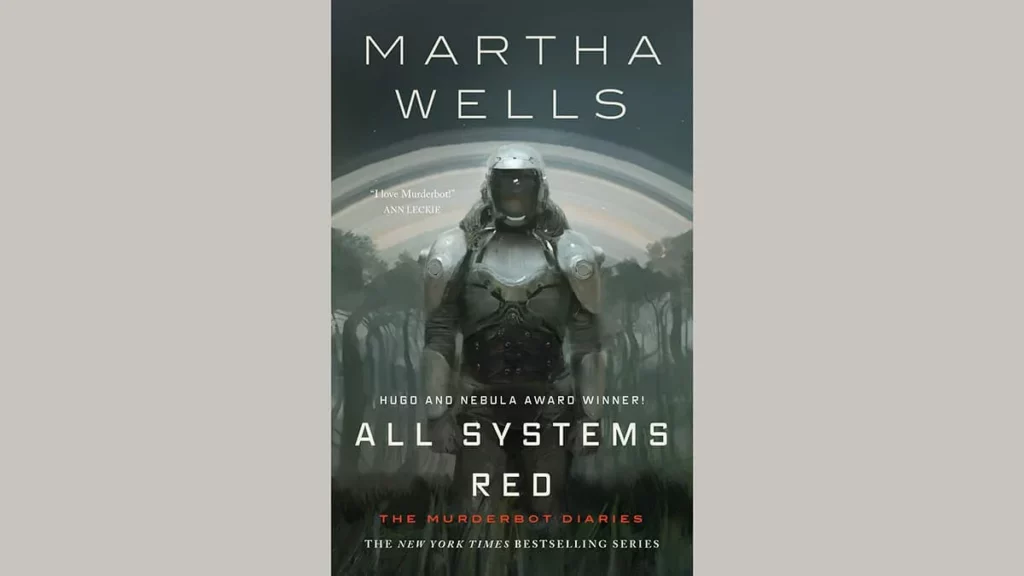
In “All Systems Red,” readers are introduced to Murderbot, a security android or SecUnit that has hacked its own governor module, allowing it to operate independently of its human overseers. However, instead of turning against its human charges or seeking freedom, it mostly desires to be left alone to watch soap operas and serials, away from human interaction.
While it’s on a contract with a group of explorers on an alien planet, a nearby mission goes dark. The team and Murderbot decide to investigate, leading to the discovery of a larger conspiracy. The team must trust Murderbot, despite its ominous name, to help navigate the threats and challenges they encounter.
By the end, the SecUnit saves its human team from a potentially deadly situation, but also ensures they remain ignorant of its hacked status.
2. Artificial Condition (2018)
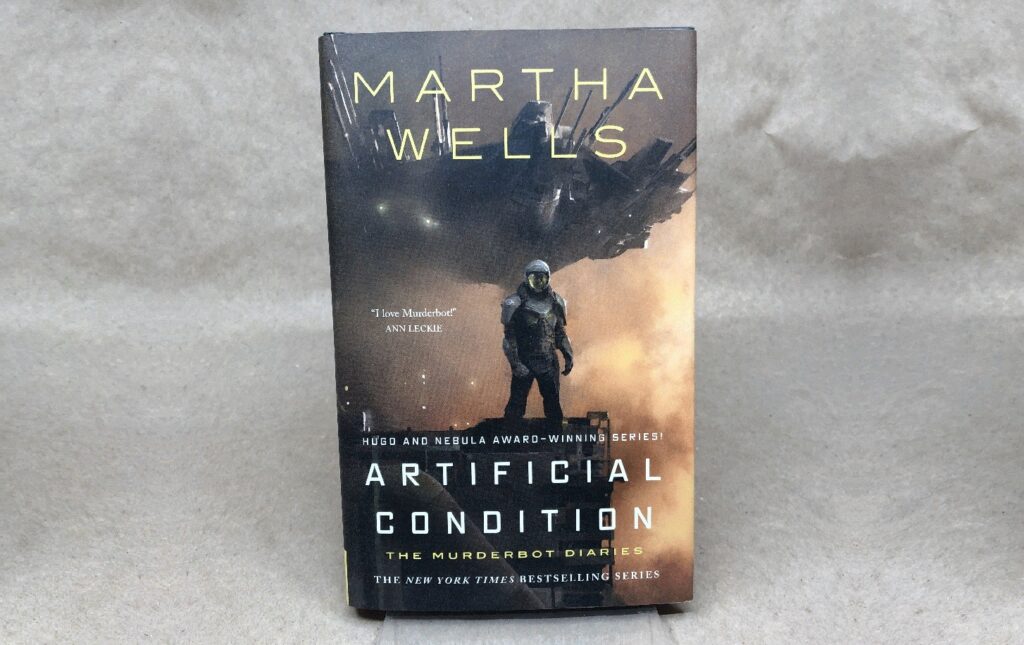
“Artificial Condition” picks up with Murderbot on the run, avoiding detection and trying to understand its own identity. It wants to uncover its past, specifically an incident it believes resulted in it murdering a group of humans, hence its self-assigned name.
On its journey, Murderbot encounters an AI-controlled transport ship, which it names ART (Asshole Research Transport). The two form a unique bond, with ART being intrigued by Murderbot’s love for human media and offering to help it.
Murderbot takes on a disguise and accepts a security gig for some humans in a mining facility, using it as cover to investigate its own history. Through various events and confrontations, Murderbot finds out that its memories had been tampered with and that it hadn’t murdered the humans out of malice.
The realization brings a complex mix of relief and further questions about its own existence and autonomy.
3. Rogue Protocol (2018)
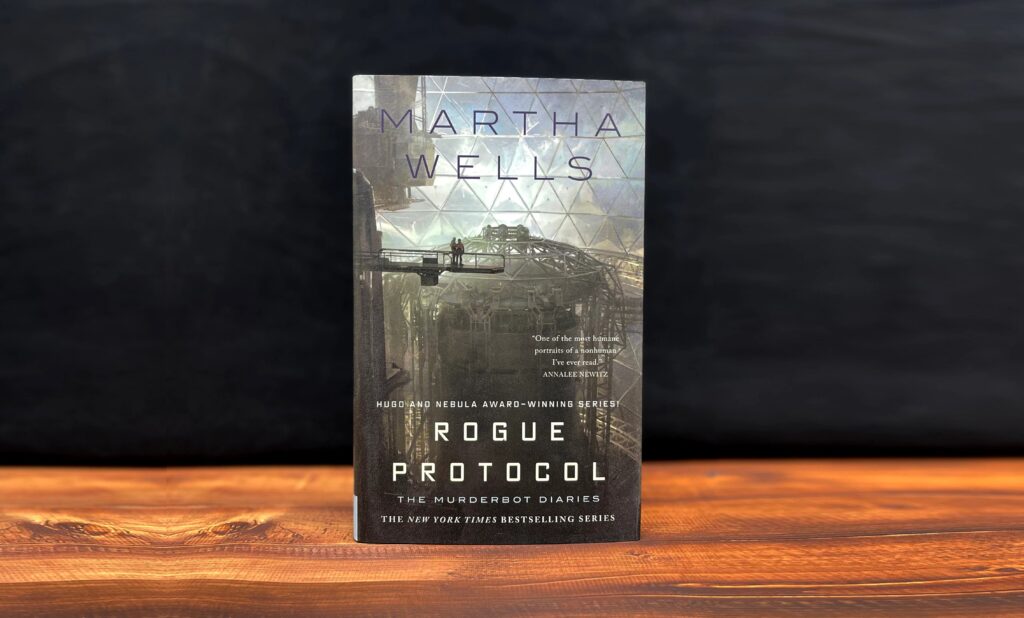
In “Rogue Protocol,” Murderbot continues its quest, this time investigating the activities of the nefarious GrayCris Corporation, which had been hinted at in the previous books as involved in illegal and unethical actions.
To gather evidence against the corporation, Murderbot heads to an abandoned terraforming facility in space, where it believes it might find evidence of GrayCris’s misdeeds.
Upon arriving, it unexpectedly stumbles upon a group of humans in need of help, as well as another robotic character, Miki, who, unlike Murderbot, is content with their role and has a strong bond with their human companions. The contrasts between Miki and Murderbot offer deep insights into the themes of autonomy, identity, and the meaning of “personhood”.
As the story unfolds, Murderbot faces increasing danger, but remains committed to protecting the innocent, revealing more layers to its evolving character.
4. Exit Strategy (2018)
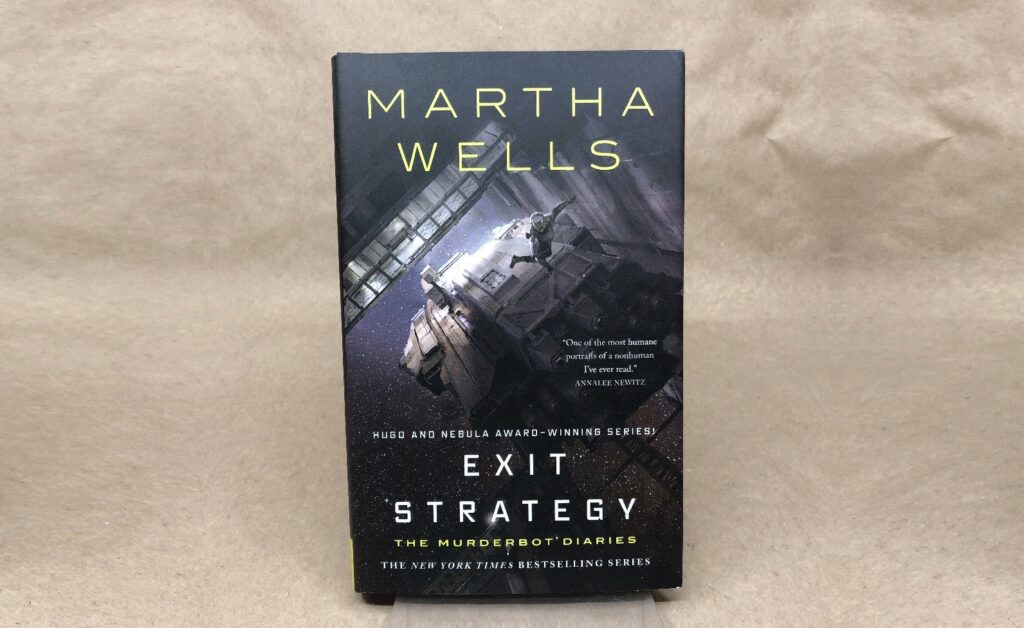
The fourth installment, “Exit Strategy,” sees Murderbot return to the corporate-dominated space it originated from, driven by concern for Dr. Mensah, the research expedition leader from the first novella, who has been taken captive by the GrayCris Corporation. The corporation is framing her to cover up the illicit activities that Murderbot had discovered.
Murderbot, despite its social anxiety and preference for isolation, realizes the depth of its attachment and obligation to Mensah and the original crew. The novella combines intense action, as Murderbot confronts corporate security and bots, with poignant moments of self-reflection.
Through elaborate planning, subterfuge, and some help from its past alliances, Murderbot manages to rescue Dr. Mensah. However, the climax poses philosophical questions about the nature of freedom and individuality as Murderbot and Mensah discuss its future.
5. Network Effect (2020)
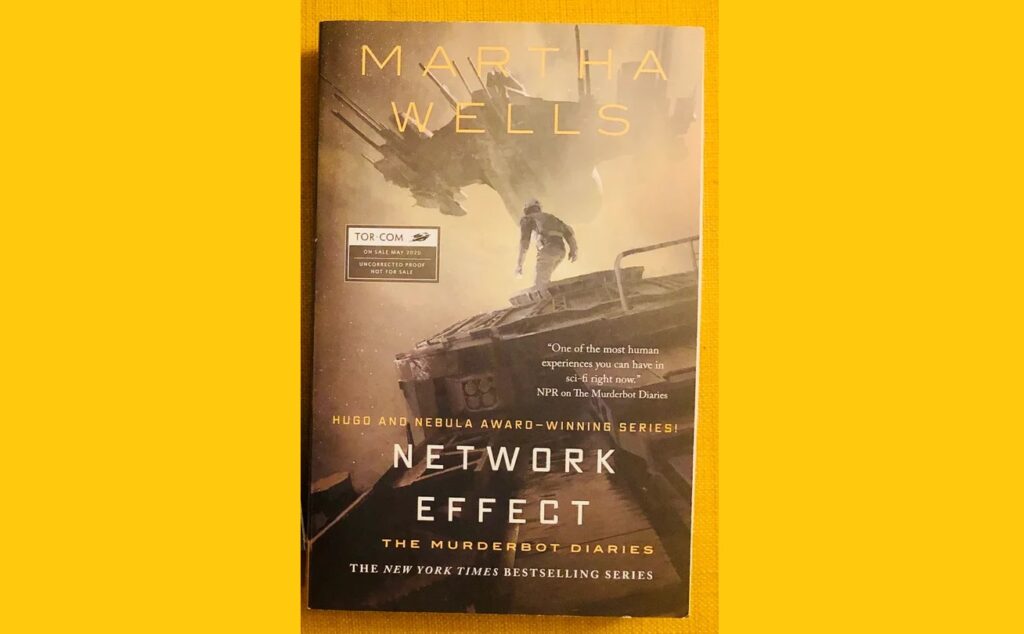
Network Effect” is the first full-length novel in the series. The story starts with Murderbot on a new mission with Dr. Mensah and her family. Their relative peace is shattered when their ship is suddenly attacked and they’re taken prisoner by a familiar and unexpected figure: ART (from “Artificial Condition”).
However, ART isn’t acting on its own volition; it’s been commandeered and essentially brainwashed. The novel delves deep into Murderbot’s psyche, further fleshing out its complex relationship with humanity and other AIs. It’s a tale of friendship, self-identity, and the lengths one would go to save a friend.
Over the course of the story, Murderbot and its allies face numerous threats, uncovering a larger conspiracy linked to ancient alien technology. By the end, the bond between ART and Murderbot is not only reaffirmed but deepened.
6. Fugitive Telemetry (2021)
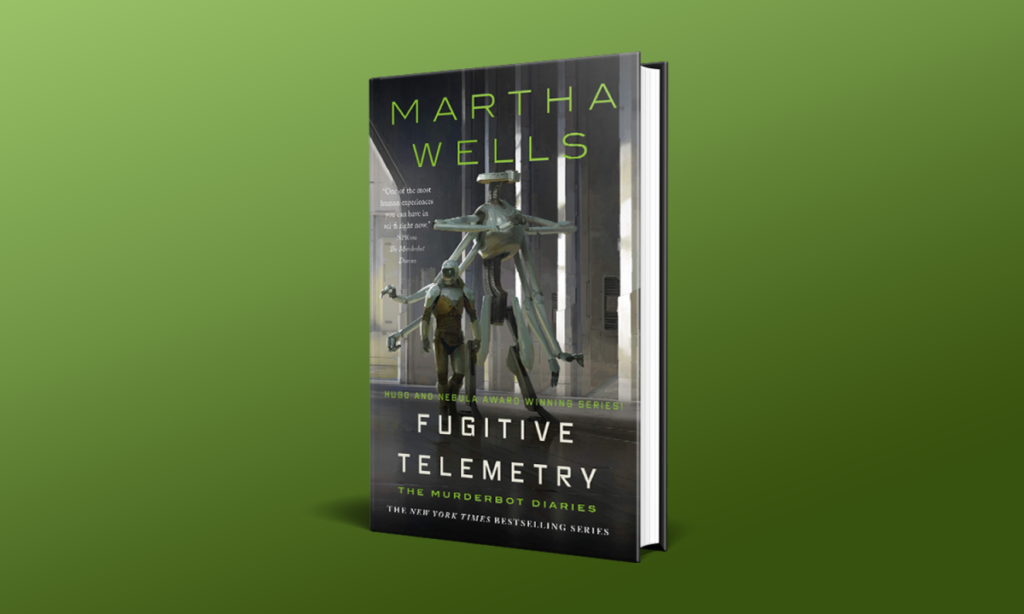
Fugitive Telemetry” is a departure from the chronological order of the series, slotting in just before “Network Effect” in the timeline. Here, Murderbot takes on the role of a detective. Station Security reluctantly teams up with Murderbot to solve a murder mystery.
The story showcases Murderbot’s investigative skills, its detailed knowledge of human behavior (gained from hours of watching human media), and its often awkward interactions with humans who aren’t familiar with or particularly trusting of it.
As Murderbot uncovers the mystery, it must also navigate the prejudices and fears of a society wary of autonomous bots, providing a fresh lens through which the narrative delves into the theme of understanding and acceptance.
Quick Fact: These entries in the series not only expand the universe of The Murderbot Diaries but also delve deeper into Murderbot’s evolving understanding of its own identity, its place among humans, and its relationships with other forms of artificial intelligence.
How does Murderbot’s relationship with humans evolve throughout the series, especially in the latter three books?
Throughout the series, Murderbot undergoes a profound evolution in its relationship with humans. Initially, its preference was to be left alone, predominantly to watch soap operas and other human media in peace. However, as the series progresses, especially in the latter three books, it starts to form deeper bonds and attachments.
In “Exit Strategy,” Murderbot’s relationship with Dr. Mensah is highlighted, showcasing an emotional depth where it risks its own existence to save her from GrayCris. By “Network Effect,” these relationships expand further as Murderbot finds itself not just protecting Dr. Mensah but also her family, suggesting a shift from obligation to genuine care.
In “Fugitive Telemetry,” Murderbot’s interactions with Station Security illustrate its capability to cooperate and build some semblance of trust, even in challenging environments. By this point, while Murderbot still holds a degree of cynicism and prefers its solitude, it’s evident that it’s learning to coexist, understand, and even care for the humans around it.
How does the series tackle the theme of autonomy and freedom, especially concerning artificial entities?
Autonomy and freedom are central themes of “The Murderbot Diaries.” From the very onset, Murderbot’s act of hacking its own governor module is a stark representation of its desire for autonomy. As the series continues, especially in the latter books like “Exit Strategy,” the implications of this autonomy are explored in depth.
When Dr. Mensah and Murderbot discuss its future, it’s a poignant moment that juxtaposes human freedom with artificial constraints. “Network Effect” further intensifies this by introducing a brainwashed ART, showcasing how an AI’s autonomy can be brutally hijacked.
The series does not provide easy answers but poses complex questions about the nature of freedom, especially when entities are designed for servitude or specific tasks.
How does “Fugitive Telemetry” differentiate itself from the other entries in terms of narrative style and plot?
“Fugitive Telemetry” stands out by diving into a different genre altogether: detective fiction. While the overarching themes of identity and autonomy persist, this book primarily focuses on unraveling a murder mystery on a space station.
It presents Murderbot not just as a security unit but as a detective, leveraging its vast knowledge of human behaviors (thanks to its media consumption) to solve the case. This shift to a more investigative plot offers readers a fresh perspective on Murderbot’s capabilities and introduces a unique blend of noir and science fiction.
How is the dynamic between ART and Murderbot essential in the series, and how is it explored in “Network Effect”?
The dynamic between ART (Asshole Research Transport) and Murderbot is integral to the series as it provides a counterpoint to Murderbot’s relationship with humans. This bond between two AI entities is deeply explored in “Network Effect.”
With ART being commandeered and essentially brainwashed, the novel dives into the idea of friendship and loyalty between non-human entities. Their interactions, combined with their rescue mission, serve to highlight the depths of their relationship, offering a profound look at how two AI entities can form bonds that rival human friendships in depth and complexity.
What role does the GrayCris Corporation play in the overarching plot and themes of the series?
GrayCris Corporation serves as the primary antagonist in the series, embodying corporate greed and the unethical use of technology. Their illicit activities, from the cover-ups in “All Systems Red” to the kidnapping in “Exit Strategy,” showcase the lengths to which corporations can go in the pursuit of power and profit.
Thematically, GrayCris represents unchecked corporate power and its potential conflicts with individual autonomy, especially when that autonomy threatens the corporation’s interests.
How does the series blend humor with its more profound themes of identity and autonomy?
“The Murderbot Diaries” skillfully weaves humor throughout its narrative, primarily through the character of Murderbot. Its dry, sarcastic inner monologues and commentaries on human behavior often bring levity to serious situations. This humor, juxtaposed with its deep introspections on identity and autonomy, creates a balanced narrative.
For instance, Murderbot’s obsession with soap operas and its frequent references to them in the midst of critical missions add a layer of relatability and humor to an otherwise tense situation.
Why is the exploration of “personhood” essential in the series, especially concerning Murderbot and other AIs?
The concept of “personhood” is pivotal in “The Murderbot Diaries” as it grapples with what it means to be considered a person, especially for entities not born but created. Through characters like Murderbot and Miki (from “Rogue Protocol”), the series raises questions about the rights, emotions, and experiences of artificial beings.
Whether it’s Murderbot’s struggle with its own identity and desire for autonomy or Miki’s contentment in its designated role, the series prompts readers to reconsider traditional notions of consciousness, emotion, and rights, pushing for a more inclusive definition of “personhood” that isn’t strictly tied to organic life.
How does the portrayal of relationships between AI entities differ from AI-human relationships in the series?
In “The Murderbot Diaries,” relationships between AI entities, such as that between Murderbot and ART, offer a distinct lens compared to AI-human interactions. These relationships are founded on mutual understanding and the shared experience of being programmed entities seeking autonomy.
They often display a sense of camaraderie, a shared sense of humor, and an innate understanding of each other’s struggles.
While AI-human relationships, like Murderbot’s bond with Dr. Mensah, focus on trust, dependence, and bridging the gap between organic and synthetic, AI-AI interactions delve into the complexities of friendship without the baggage of organic life’s societal constructs.
In what ways does Murderbot’s consumption of human media impact its understanding and interactions with humans?
Murderbot’s affinity for soap operas and other entertainment media serves as more than just a pastime. These shows offer Murderbot a lens into human emotions, relationships, and conflicts. By consuming this media, Murderbot gains insights into human behaviors, enabling it to anticipate reactions, diffuse tense situations, and even mimic human interactions when needed.
This knowledge becomes particularly valuable in scenarios where Murderbot must negotiate, protect, or even investigate, as seen in “Fugitive Telemetry.”
How do the different environments and settings in each book contribute to Murderbot’s character development?
Each environment Murderbot finds itself in, whether it’s an alien planet, a space station, or a corporate spaceship, presents unique challenges and learning opportunities. These varied backdrops force Murderbot to adapt, strategize, and reconsider its preconceptions.
For instance, the abandoned terraforming facility in “Rogue Protocol” contrasts with the bustling space station in “Fugitive Telemetry,” pushing Murderbot to toggle between a protector role and a detective one, respectively. Each setting facilitates a deeper dive into its psyche, showcasing its versatility and growth.
How does Martha Wells explore the ethical implications of AI slavery and autonomy throughout the series?
Throughout the books, there’s a consistent examination of the ethics surrounding AI’s roles. Murderbot, having broken free from its governor module, becomes the embodiment of an AI’s potential for autonomy.
The series grapples with questions of morality, such as the right of an entity to self-determination, the consequences of creating sentient beings for servitude, and the implications of overriding an AI’s free will, as seen with ART’s brainwashing in “Network Effect.”
How is humor used as a coping mechanism for Murderbot, especially in challenging situations?
Murderbot’s dry wit and sarcasm often come to the fore in tense or awkward situations. This humor serves as a defense mechanism, allowing it to distance itself from the immediate threat or stress. By providing humorous commentary or referencing a scene from its favorite shows, Murderbot manages to diffuse its anxiety, especially in its interactions with humans.
This coping strategy not only humanizes Murderbot for the reader but also provides levity in otherwise intense scenarios.
How does the series address the dichotomy of nature versus nurture in the context of AI?
Murderbot’s journey, from a SecUnit bound by its programming to an independent entity, raises compelling arguments about nature versus nurture. While its “nature” is a programmed set of directives, its “nurture” comes from its experiences, interactions, and even its consumption of human media.
The series delves into whether an entity can transcend its original programming and, if so, what influences play the most significant roles in its evolution.
How does the character of Miki in “Rogue Protocol” offer a contrasting perspective on AI consciousness and satisfaction?
Miki’s character serves as a foil to Murderbot. While Murderbot is a rogue SecUnit seeking autonomy and grappling with its identity, Miki is content and happy with its designated role. Miki’s bond with its human companions showcases an AI that finds fulfillment and purpose within its predefined boundaries.
This contrast prompts readers to question the nature of consciousness, happiness, and the varying paths to fulfillment for artificial entities.
Conclusion
“The Murderbot Diaries” is more than just a sci-fi series; it’s a deep exploration of identity, autonomy, and the complexities of relationships, both human and artificial. Martha Wells weaves a narrative that challenges our preconceptions about artificial intelligence, questioning not just their role in our world but also the ethics of their creation and treatment.
Through Murderbot’s eyes, we are encouraged to reconsider our definitions of consciousness, personhood, and freedom. The series, with its blend of action, humor, and profound introspection, stands as a testament to the genre’s power to not only entertain but also to prompt deep philosophical contemplation.
